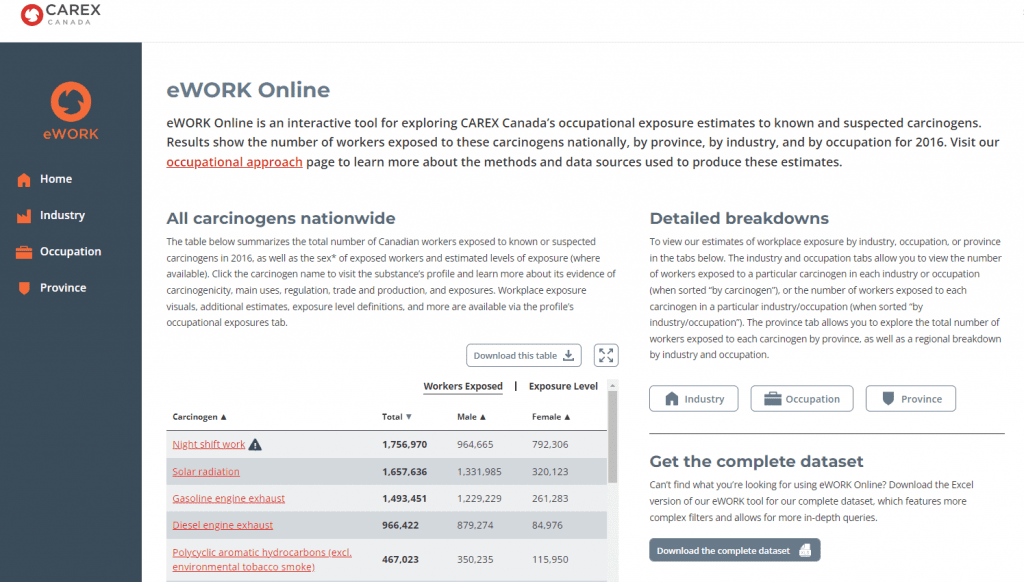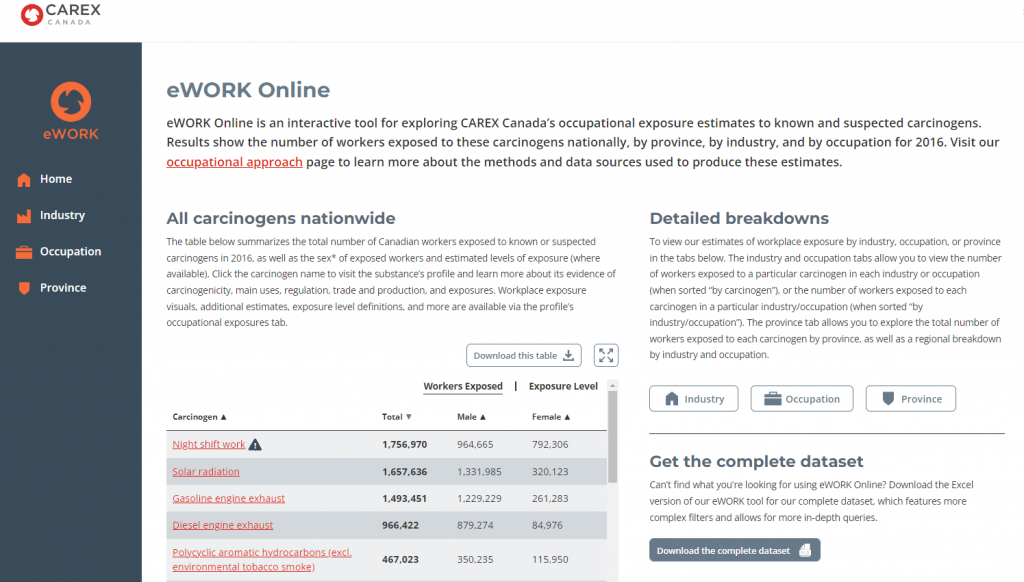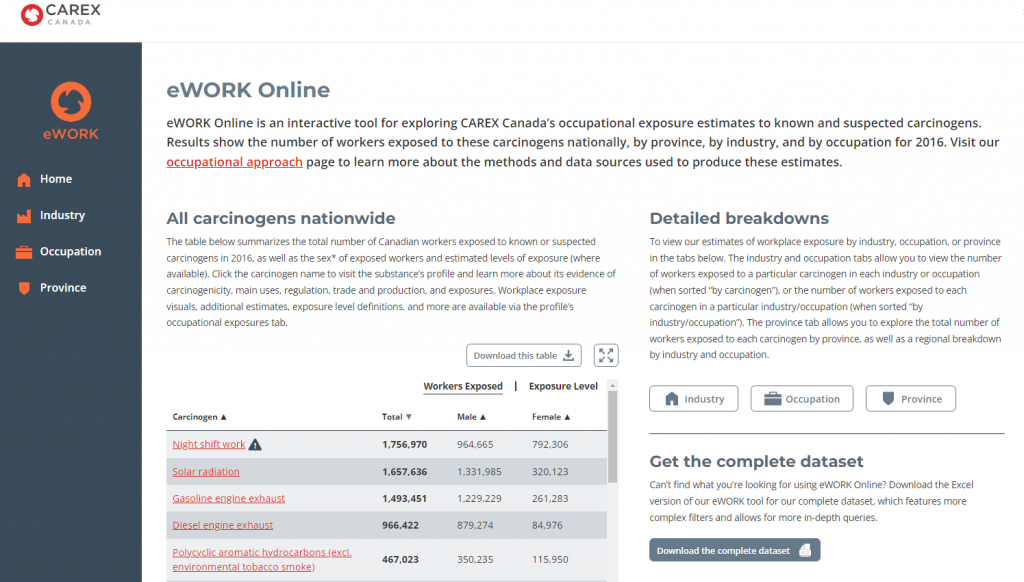Calls for lower levels of diesel particulate exposure in Ontario mining
Canadian Occupational Safety – The United Steelworkers (USW) Local 6500 has partnered with the Centre for Research in Occupational Safety and Health at Laurentian University and Occupational Health Clinics for Ontario Workers to work to change Ontario’s legislation for diesel particulate exposure in the mining industry. The USW Diesel Particulate Project is advocating for the Ontario Ministry of Labour, Immigration, Training, and Skills Development to change the mining OEL for diesel engine exhaust to 20 µg/m3, which is the level recommended by both CAREX Canada and the Occupational Cancer Research Centre.
Subscribe to our newsletters
The CAREX Canada team offers two regular newsletters: the biannual e-Bulletin summarizing information on upcoming webinars, new publications, and updates to estimates and tools; and the monthly Carcinogens in the News, a digest of media articles, government reports, and academic literature related to the carcinogens we’ve classified as important for surveillance in Canada. Sign up for one or both of these newsletters below.
CAREX Canada
School of Population and Public Health
University of British Columbia
Vancouver Campus
370A - 2206 East Mall
Vancouver, BC V6T 1Z3
CANADA
As a national organization, our work extends across borders into many Indigenous lands throughout Canada. We gratefully acknowledge that our host institution, the University of British Columbia Point Grey campus, is located on the traditional, ancestral, and unceded territories of the xʷməθkʷəy̓əm (Musqueam) people.



 We are pleased to announce that our newly updated eWORK Online tool is now available.
We are pleased to announce that our newly updated eWORK Online tool is now available.

